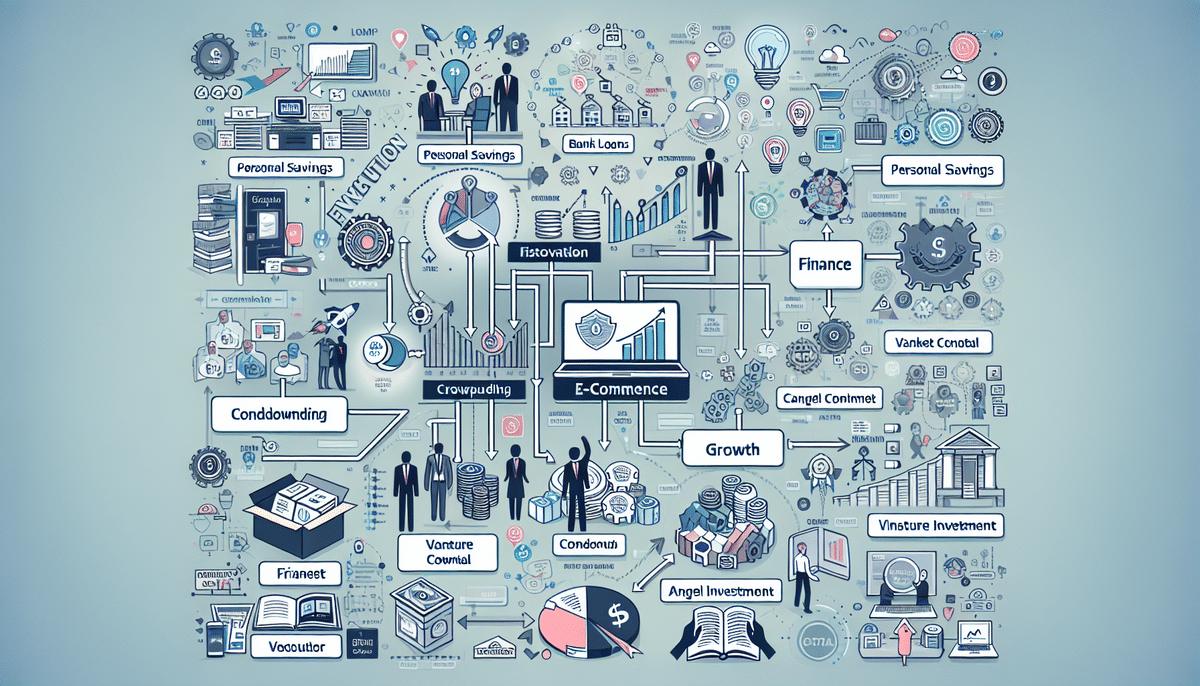Starting a 3PL: A Comprehensive Guide to Getting Started
If you're interested in starting a 3PL (Third-Party Logistics) business, you're in the right place! This guide provides all the information you need to set up a successful 3PL operation. From understanding what a 3PL is, identifying your target market, and researching the competition, to creating a business plan and securing funding, we've got you covered. Let's dive in!
What is a 3PL?
First things first, let's define what a 3PL is. 3PL stands for third-party logistics, referring to companies that provide outsourced logistics and supply chain management services to businesses. These services include transportation, warehousing, fulfillment, and more. Essentially, a 3PL provider acts as a bridge between businesses needing logistics services and the carriers or suppliers who provide them.
One of the main benefits of using a 3PL provider is that it allows businesses to focus on their core competencies, while leaving logistics and supply chain management to the experts. This can lead to increased efficiency and cost savings. According to a 2023 Supply Chain Report, companies that utilize 3PL services have seen an average cost reduction of 15% in their logistics operations.
Another advantage of partnering with a 3PL provider is the ability to expand into new markets more easily. A 3PL with a presence in the target market offers local knowledge, established networks of carriers, and suppliers, reducing the time and cost involved in setting up a new supply chain. This partnership can also mitigate risks associated with entering new markets.
Benefits of Starting a 3PL
Starting a 3PL business can be a smart move for several reasons:
- Diversification of Revenue Streams: Offering multiple logistics services can stabilize income.
- Scalability: Services can expand as your client base grows.
- Cross-Selling Opportunities: Access to an existing customer base allows for selling additional services.
- Leverage Technology: Utilize advanced technologies to streamline operations and enhance efficiency.
- High Profit Margins: Logistics can offer significant profit potential with effective management.
Additionally, a 3PL can provide customized solutions tailored to the specific needs of each client, helping you stand out in a competitive market. This personalized approach fosters long-term partnerships, as clients value the dedicated attention and specialized services.
The global 3PL market was valued at approximately $1.6 trillion in 2023 and is expected to grow at a compound annual growth rate (CAGR) of 7.6% from 2023 to 2030, according to Grand View Research.
Identifying the Target Market for Your 3PL
Before launching your 3PL, it's crucial to identify your target market. Consider questions such as:
- Who are your ideal customers?
- Will you focus on a particular industry or niche?
- What are the specific needs of your target market?
Conducting comprehensive market research is essential. Analyze industry trends, assess your competitors, and survey potential customers to understand their needs and preferences. According to a Statista Report, industries like e-commerce, healthcare, and automotive represent significant opportunities for 3PL providers.
Geographic location also plays a vital role. Decide whether to serve customers locally, nationally, or globally. Each geographic focus comes with its own logistics challenges and cost implications. For instance, global services require navigating international shipping regulations and managing cross-border logistics efficiently.
Researching the Competition in the 3PL Industry
Understanding your competition is key to differentiating your 3PL business. Research both direct competitors and those offering similar services or targeting the same geographic regions. Evaluate their strengths and weaknesses to identify gaps in the market that your 3PL can fill.
Attending industry events and conferences can provide valuable insights into competitor strategies and emerging trends. Additionally, online resources such as Supply Chain Digital and Logistics Management offer updates on industry developments and competitor news.
Leveraging social media and online forums can also help gather information about competitors' customer feedback and service quality, enabling you to position your 3PL more effectively.
Creating a Business Plan for Your 3PL
A solid business plan is the foundation of your 3PL's success. Your plan should include:
- Service Overview: Detailed descriptions of the logistics services you'll offer.
- Target Market: Insights into your ideal customers and market segments.
- Competitive Analysis: Evaluation of competitors and your unique value proposition.
- Marketing Strategies: Plans to attract and retain clients.
- Financial Projections: Budgeting, revenue forecasts, and funding requirements.
Technology is a critical aspect of your business plan. Invest in Transportation Management Systems (TMS) and Warehouse Management Systems (WMS) to streamline operations. According to a report by Forrester Research, companies using advanced TMS and WMS report up to 20% improvement in operational efficiency.
Another essential component is building a competent team. Hire employees with expertise in logistics, supply chain management, customer service, and technology. Investing in employee training and development ensures your team can handle the complexities of logistics operations effectively.
Choosing a Business Structure for Your 3PL
Selecting the right legal structure is crucial for your 3PL business. Common structures include:
- Sole Proprietorship: Simplest structure, with complete control but personal liability.
- Partnership: Shared ownership and responsibilities, which can be general or limited.
- Corporation: Separate legal entity offering limited liability but with more regulatory requirements.
- Limited Liability Company (LLC): Combines the benefits of partnerships and corporations, offering flexibility and limited liability.
Consult with legal and financial professionals to determine the best structure for your business needs and long-term goals. For more information, refer to the U.S. Small Business Administration's guide.
Registering Your 3PL with the Relevant Authorities
Compliance is essential to avoid legal issues. Depending on your location and the scope of your operations, you may need to register with various authorities:
- Local Agencies: Business licenses and permits typically required by city or county.
- State Authorities: Registration with the state's Department of Transportation or Commerce.
- Federal Agencies: Including the Federal Motor Carrier Safety Administration (FMCSA), and the Environmental Protection Agency (EPA).
Failure to register can result in fines, penalties, or business suspension. Ensure you understand the specific regulatory requirements for your 3PL operations by consulting with a compliance expert or legal advisor.
Securing Funding for Your 3PL Startup
Launching a 3PL business often requires significant initial investment. Consider the following funding options:
- Bank Loans: Traditional loans with defined repayment terms.
- Grants: Government or private grants for specific business purposes.
- Investors: Venture capital or angel investors seeking equity in exchange for capital.
- Self-Funding: Using personal savings or assets to finance the business.
A well-crafted business plan is essential when seeking funding. Include detailed financial projections, market analysis, and a clear strategy for how funds will be utilized. According to Forbes, presenting a thorough and realistic business plan increases your chances of securing funding by up to 70%.
Setting Up an Office and Hiring Employees for Your 3PL
Establishing a physical location is crucial for your 3PL operations, whether it's a warehouse or office space. When setting up, consider:
- Proximity to transportation hubs like ports, airports, and major highways.
- Size and scalability to accommodate future growth.
- Infrastructure that supports your operational needs, such as advanced security systems and communication networks.
Hiring the right team is equally important. Develop detailed job descriptions, conduct thorough interviews, and provide comprehensive training to ensure your staff can effectively manage logistics operations and deliver excellent customer service.
Choosing the Right Location for Your 3PL Operations
The location of your 3PL operations significantly impacts efficiency and cost-effectiveness. Consider the following factors when selecting a location:
- Proximity to Transportation Networks: Being close to major highways, railways, ports, and airports can reduce transportation costs and delivery times.
- Access to a Skilled Workforce: Ensure there is availability of skilled labor in logistics and supply chain management.
- Regional Market Demand: Choose locations that are near your target markets to minimize transit times and improve service levels.
- Cost of Operations: Balance the benefits of location against the costs, including real estate, labor, and taxes.
A strategic location can enhance your 3PL's competitive advantage by improving service delivery and operational efficiency.
Selecting Transportation Modes and Carriers to Work With
As a 3PL provider, partnering with reliable transportation carriers is essential. Consider the following when selecting carriers:
- Speed: Ability to meet delivery timelines.
- Cost: Competitive pricing structures.
- Reliability: Consistent performance and minimal delays.
- Customer Service: Responsive and effective communication.
Diversifying your transportation modes (e.g., road, rail, air, sea) can enhance flexibility and resilience in your supply chain operations. According to the Bureau of Labor Statistics, multimodal logistics strategies help reduce costs by up to 10% and improve delivery performance.
Implementing Technology Solutions for Your 3PL Operations
Technology plays a critical role in modern 3PL operations. Invest in the following systems to enhance efficiency:
- Transportation Management Systems (TMS): Optimize route planning, carrier selection, and freight auditing.
- Warehouse Management Systems (WMS): Streamline inventory management, order fulfillment, and warehouse operations.
- Customer Relationship Management (CRM): Manage client interactions and improve customer service.
- Automated Tracking and Reporting Tools: Provide real-time visibility into shipments and operational performance.
Integrating these technologies can lead to significant improvements in operational efficiency, accuracy, and customer satisfaction. A study by McKinsey found that digital integration in supply chains can reduce operational costs by up to 15%.
Developing Relationships with Suppliers and Customers in the Industry
Building strong relationships with suppliers and customers is vital for a successful 3PL business. Focus on:
- Effective Communication: Maintain open and transparent communication channels.
- Trust and Reliability: Deliver consistent and reliable services to build trust.
- Collaborative Partnerships: Work closely with partners to develop mutually beneficial strategies.
Networking through industry associations such as the American Shipper Association or the Council of Supply Chain Management Professionals (CSCMP) can help you connect with potential partners and customers, fostering long-term business relationships.
Ensuring Compliance with Regulations and Industry Standards in Your 3PL Operations
Compliance with regulations and industry standards is non-negotiable in the logistics sector. Key areas include:
- Transportation Regulations: Adhere to federal and state transportation laws and safety standards.
- Environmental Regulations: Ensure operations meet environmental protection standards set by agencies like the EPA.
- Data Security Standards: Protect sensitive customer and business data in compliance with regulations like the GDPR.
- Industry Certifications: Obtain certifications such as ISO 9001 for quality management systems.
Staying updated on regulatory changes and implementing robust compliance programs can prevent legal issues and enhance your 3PL's reputation. Resources like the Federal Motor Carrier Safety Administration provide guidelines and updates on relevant regulations.
Marketing Strategies for Growing Your 3PL Business
Effective marketing is essential to attract and retain clients. Implement a comprehensive marketing plan that includes:
- Content Marketing: Publish informative articles, case studies, and whitepapers to establish authority.
- Social Media Marketing: Utilize platforms like LinkedIn, Twitter, and Facebook to engage with potential clients.
- Email Marketing: Send targeted email campaigns to nurture leads and maintain client relationships.
- Search Engine Optimization (SEO): Optimize your website content to rank higher in search engine results.
- Networking and Referrals: Leverage industry contacts and encourage satisfied clients to refer your services.
According to a Content Marketing Institute report, businesses that prioritize content marketing generate 3 times more leads than those that don't.
Measuring Success and Monitoring Performance Metrics of Your 3PL
Tracking key performance indicators (KPIs) is essential to gauge the success of your 3PL operations. Important metrics include:
- On-Time Delivery Percentage: Measures the reliability of your delivery services.
- Order Accuracy: Tracks the correctness of orders fulfilled.
- Customer Satisfaction Ratings: Reflects client contentment with your services.
- Revenue Growth: Indicates the financial health and expansion of your business.
- Operational Efficiency: Assesses the effectiveness of your logistics processes.
Using performance monitoring tools and regular reporting helps identify areas for improvement and ensures your business stays on track to meet its goals. Implementing Balanced Scorecard methodologies can provide a comprehensive view of your 3PL's performance.
Future Trends and Opportunities in the 3PL Industry
The logistics industry is continuously evolving. Staying ahead of trends can open new opportunities for your 3PL business. Key trends include:
- Automation and Robotics: Enhancing warehouse operations with automated systems.
- Artificial Intelligence (AI) and Machine Learning: Optimizing logistics and predicting demand patterns.
- Sustainability: Implementing eco-friendly practices to meet growing environmental concerns.
- Blockchain Technology: Improving transparency and security in supply chain transactions.
- E-commerce Growth: Expanding services to cater to the booming online retail sector.
Adopting these technologies and aligning with industry trends can position your 3PL business for future growth and competitiveness. For example, the integration of AI in logistics can reduce operational costs by up to 25%, according to McKinsey.
Common Challenges Faced by New Entrants in the 3PL Market
Starting a 3PL business comes with its own set of challenges, including:
- High Competition: The logistics market is saturated with well-established players.
- Rising Operational Costs: Fluctuations in fuel prices and labor costs can impact profitability.
- Technological Barriers: Implementing advanced technology solutions requires significant investment and expertise.
- Regulatory Compliance: Navigating complex logistics regulations can be daunting.
- Customer Acquisition: Building a client base takes time and effective marketing strategies.
Tips for Overcoming Challenges and Achieving Success in Starting a New 3PL Business
To navigate the challenges of starting a 3PL business, consider the following strategies:
- Develop a Niche Market: Focus on a specific industry or service to differentiate your business.
- Invest in Technology: Utilize advanced logistics software to improve efficiency and scalability.
- Build Strong Partnerships: Collaborate with reliable carriers and suppliers to enhance service quality.
- Focus on Customer Service: Provide exceptional service to build client loyalty and gain referrals.
- Implement Cost Control Measures: Monitor and manage operational expenses to maintain profitability.
Additionally, continuously educate yourself on industry trends and best practices. Engaging with industry associations and investing in professional development can further enhance your expertise and business acumen.
In conclusion, starting a 3PL can be a challenging but rewarding venture. With the right strategies, planning, and execution, your 3PL could become a successful and profitable business in no time.






















